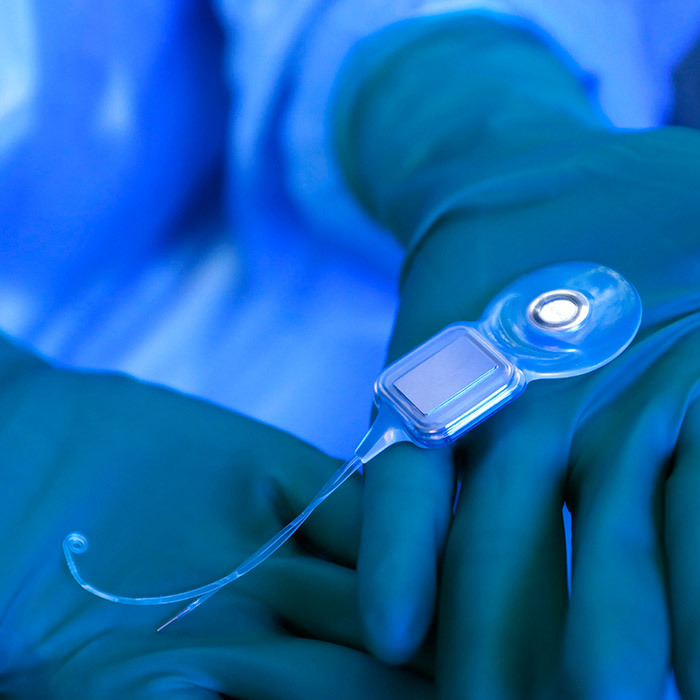Traditionally, Cochlear implants have been offered to patients who are profoundly deaf in both ears. However recent research shows that patients with preserved low tone hearing with poor high tone (high pitch) hearing, may benefit from Cochlear Implantation.

Cochlear implantation
A small electronic device that is surgically placed in the inner earIt has also been approved as a treatment for single-sided deafness (deafness in one ear only); and can be an effective treatment for tinnitus.
A Cochlear implant is a small electronic device that is surgically placed in the inner ear to help transmit sound via an electrical signal. It consists of an external component and a surgically implanted internal component which is held together through the skin by a magnet. The external component consists of a microphone, speech processor and transmitter which is worn like a hearing aid. The microphone picks up sound from the environment and sends the signal to a speech processor which selects, analyses and digitizes the sound signals and transmits the signal to the internal component. This in turn sends these signals to the implant where the fibres of the auditory nerve are stimulated and sound sensations are perceived. Once inserted and working, the Cochlear implant, in most cases, restores hearing to the appropriately selected patient. If you think you are a candidate for a cochlear implant and would like to talk to a recipient, we would be happy to arrange that through our clinic.
Just like Cochlear Implant surgery needs the skills of a surgeon with dedicated sub-specialty expertise in the area to place the internal part, the ongoing rehabilitation needs dedicated audiological follow up by specially trained. Cochlear Implant patients need a team approach. Our partner audiological colleagues at Neurosensory, can provide that dedicated service, ideally at the same time as the consultation with your surgeon. The Sydney ENT, Hearing and Balance centre is unique in the fact that it can provide this complete care along with caring for hearing aids and performing balance testing if required all in the same location.
Other Implantable Hearing aids
There are other implantable hearing aids available for Conductive,mixed or sensorineural hearing loss such as a Bone Anchored Hearing aid (BAHA) (Cochlear Ltd), Bone Bridge (MED-EL Ltd) or middle ear implants. Different implantable devices have different strengths and indications but a comprehensive range of options are available and can be discussed if a conventional hearing aid is no longer appropriate for you.
The Meniere’s Research Fund Inc. (MRFI) and the Whirled Foundation invites you to watch a “live Stream” of the 4th Meniere’s Disease Research Symposium.

Further information can be derived from the following links:
Assoc Prof Mukherjee’s Cochlear Implant Papers:
- Mukherjee P, Eykamp K, Brown D, Curthoys I, Flanagan S, Biggs N, McNeill C, Gibson W. Cochlear Implantation in Maeniere’s Disease with and without labyrinthectomy. Otology and Neurotology. 2017;38(2):192-198
- Ramsden J, Mukherjee P. Paediatric Implantable Hearing Aids. J ENT Masterclass. 2015; 7 (1).
- Mukherjee P, Ramsden J, Donnelly N, Axon P, Saeed S, Fagan P, Irving R. Cochlear implantation in untreated Vestibular Schwanommas: a multicentre study. Otology and Neurotology. 2013, 34 (7): 1291-8.
- Mukherjee P, Uzun H, Wong C, Curthoys I, Jones A, Gibson W. Assessment of intracochlear trauma caused by the insertion of a new straight research array. Cochlear Implant International. 2012; 13 (3): 156-62. Conducted as of Masters of Surgery Dissertation
